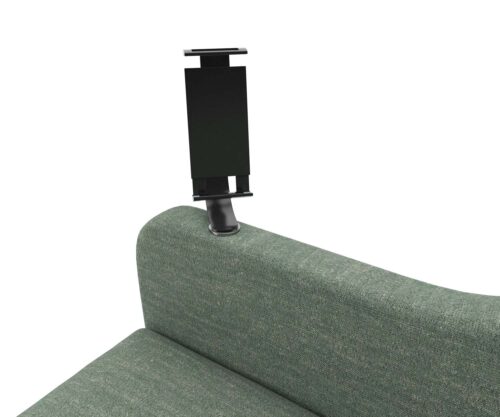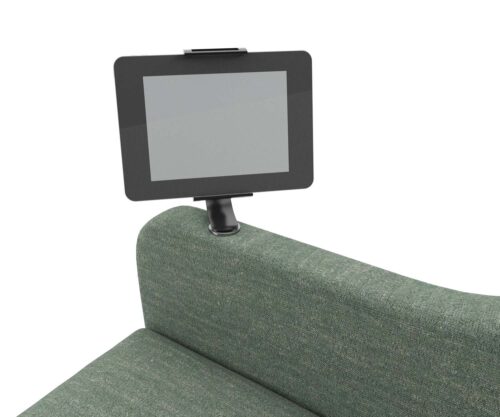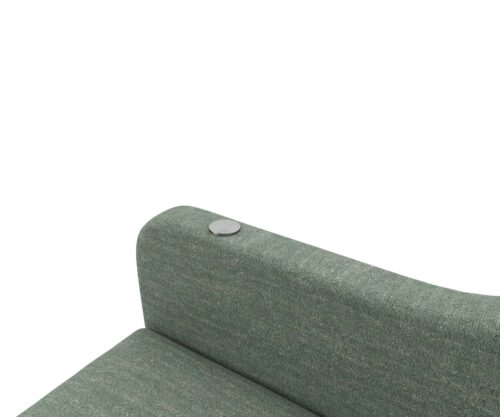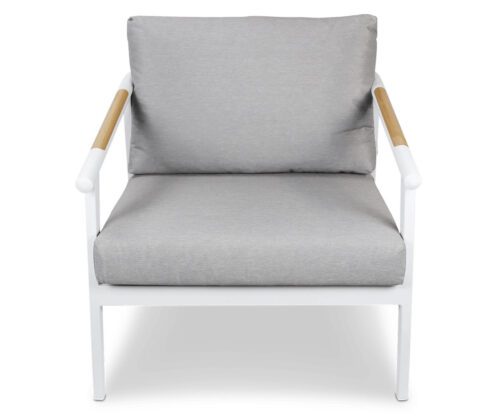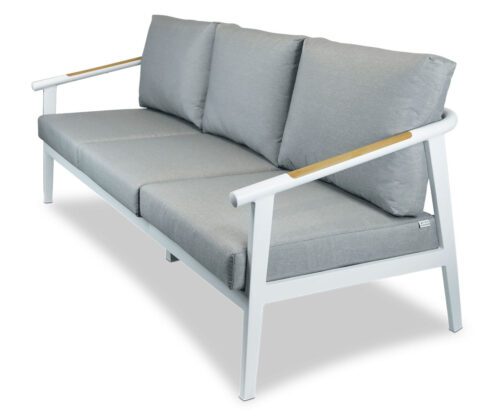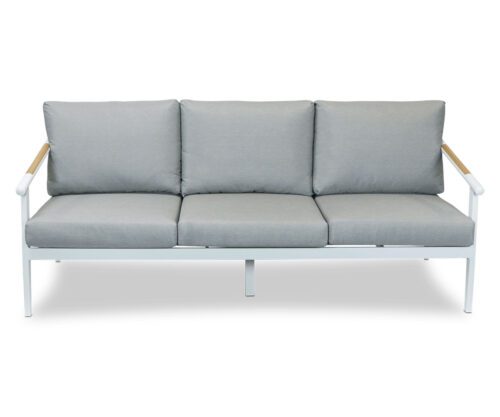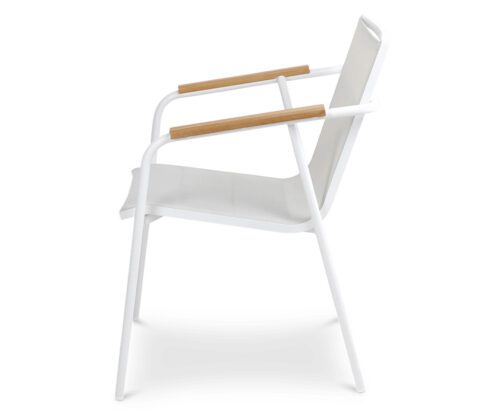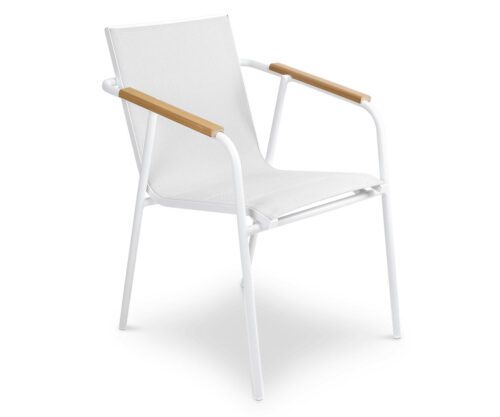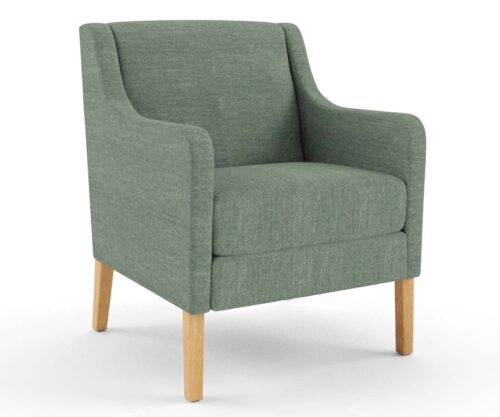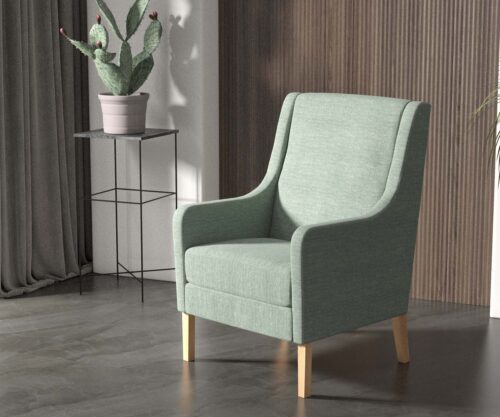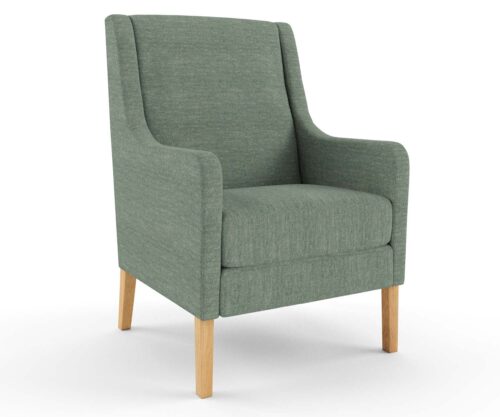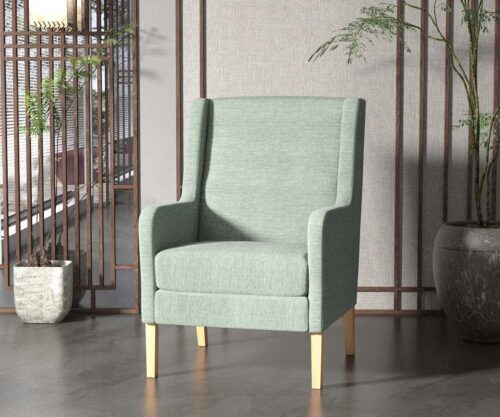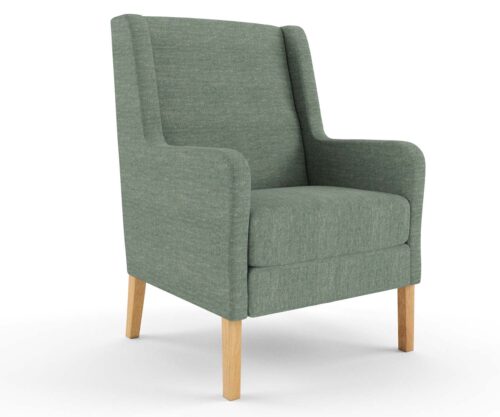Hotel Procurement Best Practice Guide: Quality Assurance in Australian Furniture Purchases

In the dynamic realm of Australian hotel management, where a warm welcome is as important as the quality of the furnishings, Hotel Procurement Managers bear the responsibility of making every guest’s stay memorable. Juggling budget constraints and ensuring the durability of selected furniture is no small feat.
In this guide, we delve into quality assurance in Australian hotel furniture procurement, offering actionable insights to enhance your purchasing practices.
Understanding the Significance of Quality
Quality assurance forms the foundation of successful hotel furniture procurement. Subpar furnishings not only compromise the visual appeal but can also lead to frequent replacements, causing financial strain and operational headaches. The durability and functionality of chosen furniture directly impact the comfort and satisfaction of your guests.
1. Collaborate with Trusted Suppliers
When embarking on the journey of hotel furniture procurement in Australia, one of the cornerstones of success is establishing strong collaborations with trusted suppliers. In the diverse and ever-evolving market, the importance of reliable partnerships cannot be overstated. Here’s a closer look at how Hotel Procurement Managers can navigate and build relationships with reputable furniture suppliers:
- Research and Due Diligence: Begin by conducting thorough research on potential suppliers. Delve into their track record within the Australian hospitality industry, examining their history, client testimonials, and project portfolios. Due diligence is key to understanding a supplier’s reliability and their ability to deliver quality products consistently.
- Local Expertise: Opt for suppliers who possess a deep understanding of the local market. Those familiar with Australian design preferences, quality standards, and regulatory requirements are better equipped to provide tailored solutions that align seamlessly with the unique needs of your hotel.
- Visit Showrooms and Factories: Take the opportunity to visit the showrooms and manufacturing facilities of potential suppliers. This hands-on approach allows you to inspect the craftsmanship, materials, and quality of their furniture firsthand. A personal visit fosters transparency and builds trust in the supplier’s capabilities.
- References and Recommendations: Seek out references from other businesses in the hospitality sector that have collaborated with the prospective supplier. Recommendations and testimonials offer valuable insights into the supplier’s reliability, communication, and post-purchase support, contributing to a well-rounded assessment.
- Open Communication Channels: Establish open and clear communication channels from the outset. A supplier who is responsive, transparent, and willing to engage in open dialogue is more likely to be a reliable partner. This communication extends beyond initial inquiries and should continue throughout the procurement process and beyond.
- Negotiate Terms and Conditions: Work closely with suppliers to negotiate favorable terms and conditions. This includes pricing, payment terms, delivery schedules, and any warranties or guarantees. Clarity on these aspects helps in avoiding potential misunderstandings and ensures a smooth collaboration.
- Supplier Audits: Periodically conduct supplier audits to evaluate their ongoing performance. This proactive approach helps in identifying any deviations from agreed-upon standards and allows for timely course corrections. Regular audits reinforce the importance of quality and adherence to established benchmarks.
- Long-Term Furniture Partnership Mindset: Approach supplier relationships with a long-term mindset. Cultivating partnerships rather than mere transactions fosters mutual trust and understanding. It also positions you as a valued client, potentially opening doors to preferential treatment, such as exclusive product previews or customized solutions.
2. Conduct Thorough Quality Checks
Don’t just take supplier assurances at face value; conduct rigorous quality checks on furniture samples before committing to bulk purchases. Scrutinize materials, craftsmanship, and finish to ensure that the selected items align with your established standards. Keep an eye out for certifications or compliance with Australian industry standards that validate the quality of the products.
Here’s a more detailed exploration of this crucial aspect:
- Material Inspection: Assess the durability of the materials used in the furniture. Consider factors such as resistance to wear, tear, and fading, especially given Australia’s diverse climate conditions. Evaluate how easy it is to maintain and clean the materials. Hotels often need furnishings that can withstand frequent cleaning and maintenance without compromising quality.
- Craftsmanship Evaluation: Examine the joinery and construction of the furniture pieces. Sturdy joinery and well-built structures are essential for ensuring the longevity of the furniture in a high-traffic hospitality environment. Scrutinize the finishing details, looking for smooth surfaces, even finishes, and attention to detail. Poor finishing can not only affect aesthetics but also lead to discomfort for guests.
- Functional Assessment: Sit on chairs, lounge on sofas, and test the functionality of various furniture items. Prioritize comfort and ergonomic design to ensure that guests have a pleasant experience during their stay. Assess the usability of different furniture pieces in the context of hotel spaces. Consider factors like ease of movement, flexibility, and adaptability to diverse settings within the hotel.
- Compliance with Standards: Ensure that the selected furniture complies with relevant Australian industry standards and regulations. This includes safety standards, fire regulations, and any other specific requirements applicable to the hospitality sector.
- Testing for Stability and Safety: Check the stability of furniture items to prevent accidents or injuries. Tables, chairs, and other furnishings should be well-balanced and able to withstand typical usage scenarios. Confirm the presence of safety features, such as anti-tip mechanisms for tall furniture or childproof design elements if applicable.
- Supplier Transparency: Verify whether the supplier holds certifications attesting to their commitment to quality and ethical practices. Look for certifications related to environmental sustainability, responsible sourcing, and industry-recognized quality standards.
- User Feedback and Reviews: Leverage user reviews and feedback from similar hotel projects or within the Australian hospitality industry. Insights from peers who have previously purchased the same or similar furniture can provide valuable information about performance and durability in real-world scenarios.
- Long-Term Considerations: Review the warranty offered by the supplier and understand the terms and conditions. Additionally, inquire about the availability of after-sales support for any potential issues that may arise post-installation.
3. Balance Aesthetics with Durability
Find that sweet spot between style and durability. While guests are drawn to visually appealing designs, the furniture must also endure the rigors of constant use. Opt for materials and finishes that not only look good but also have a proven track record of standing up to the demands of an Australian hotel environment.
- Material Selection: Choose materials that align with the desired visual theme of the hotel. Whether it’s a modern, chic atmosphere or a more classic, traditional setting, the selected materials should contribute to the overall design aesthetic. Consider the wear and tear associated with frequent use. Opt for materials known for their resilience, ease of maintenance, and resistance to common issues like scratches, stains, and fading. For example, robust hardwoods, high-quality laminates, and durable upholstery fabrics are often preferred.
- Construction and Craftsmanship: Pay attention to the craftsmanship and construction details that contribute to the furniture’s visual appeal. Well-crafted pieces can enhance the overall design and make a positive impression on guests. Ensure that the construction methods and craftsmanship prioritize structural integrity. Reinforcements, quality joints, and solid construction are key factors that contribute to the longevity of furniture in a busy hotel environment.
- Finishes and Coatings: Finishes and coatings play a crucial role in achieving the desired look and feel. Whether it’s a glossy finish for a modern vibe or a matte finish for a more subdued aesthetic, the chosen coatings contribute significantly to the furniture’s visual appeal. Select finishes that not only enhance aesthetics but also provide protection. Durable coatings should be resistant to scratches, moisture, and other factors that could compromise the appearance over time.
- Functionality and Comfort: Furniture should not only look good but also serve its intended purpose within the overall design concept. Consider the functional aspects of each piece in relation to the desired aesthetic. Ensure that the furniture is not just visually appealing but also practical and comfortable. Functional durability is key to meeting the needs of guests while maintaining the desired aesthetic appeal.
4. Learn from User Reviews and Local Insights
Tap into the experiences of others in the industry. Explore user reviews, local case studies, and industry publications to gain insights into the performance of specific furniture brands or pieces in the Australian context. Peer feedback can provide valuable perspectives on durability, functionality, and overall satisfaction.
- User Reviews: Explore various online platforms where users, including hoteliers and guests, share their experiences with different furniture brands. Websites like product review platforms, social media, and hospitality-focused forums often feature candid and detailed feedback. Visit the websites of furniture brands and suppliers to find customer testimonials and reviews. This direct feedback can provide insights into the performance and durability of specific products.
- Local Case Studies: Stay updated with industry publications and case studies that highlight successful furniture implementations in Australian hotels. These sources often provide in-depth analyses of the challenges faced, solutions implemented, and the overall performance of chosen furniture. Attend local hospitality and procurement events to connect with peers and gain firsthand insights into their experiences with different furniture choices. Conversations with industry professionals can be enlightening and may offer recommendations based on real-world scenarios.
- Professional Networks: Become a part of relevant industry associations or networks focused on Australian hospitality and procurement. These groups provide a platform for professionals to share their experiences, discuss best practices, and recommend furniture suppliers based on their own successes.
- Local Insights: Understand the unique characteristics and demands of different regions within Australia. Local climates, cultural preferences, and design trends can influence the suitability of specific furniture choices for a particular area. Work closely with local interior designers, architects, and other professionals who have firsthand knowledge of the Australian hospitality landscape. Their insights can guide you in selecting furniture that aligns with local preferences and functional requirements.
- Visit Existing Installations: Whenever possible, visit other hotels or hospitality establishments that have implemented the furniture you are considering. Experiencing the durability and functionality of furniture in a real-world setting can provide valuable insights that go beyond what is mentioned in product specifications.
5. Define Clear Quality Standards
Defining clear quality standards is a crucial aspect of ensuring the success of hotel furniture procurement in Australia. It involves establishing explicit criteria and expectations for the quality of the furniture to be purchased. Here’s a more detailed exploration of this essential step:
- Material Specifications: Clearly outline the preferred materials for different types of furniture. Specify the type of wood, metal, upholstery fabric, or any other materials that align with the desired quality and aesthetic standards. For example, you might specify sustainably sourced timber or easy-to-clean, stain-resistant fabrics for certain areas.
- Construction Guidelines: Define the construction standards that the selected furniture must meet. This could include criteria such as joint strength, stability, and resistance to wear and tear. Specify any particular construction methods or techniques that align with your expectations for durability.
- Finish Requirements: Detail the expected finish for each type of furniture. Whether it’s a specific color palette, texture, or gloss level, clearly communicate the desired aesthetic. This ensures that the selected furniture not only meets functional requirements but also contributes to the overall design theme of the hotel.
- Compliance with Safety Standards: Emphasize adherence to safety standards and regulations. Ensure that the chosen furniture complies with Australian safety codes and regulations to guarantee the well-being of guests and staff. This may include fire safety standards, anti-tipping features for certain pieces, or compliance with relevant building codes.
- Durability Expectations: Clearly communicate your expectations regarding the lifespan of the furniture. This involves specifying the level of durability required based on the anticipated usage in a hotel setting. Discuss expected warranties or guarantees from suppliers to ensure a level of accountability for the longevity of the purchased items.
- Environmental Sustainability: If environmental sustainability is a priority for your hotel, outline specific requirements related to eco-friendly materials, manufacturing processes, and certifications.
- Testing and Inspection Protocols: Establish protocols for testing and inspection of furniture before and after delivery. Clearly define the procedures for assessing quality, and include provisions for addressing any defects or discrepancies. This proactive approach ensures that potential issues are identified and resolved early in the procurement process.
- Communication with Suppliers: Foster open communication with suppliers to ensure a shared understanding of the quality standards. Encourage suppliers to provide detailed information on the manufacturing processes, materials used, and any third-party certifications. Regular communication helps in addressing potential challenges and maintaining a collaborative relationship.
Ensuring quality in Australian hotel furniture procurement is more than a checkbox; it’s a commitment to delivering an exceptional guest experience. By collaborating with trusted suppliers, conducting thorough quality checks, balancing aesthetics with durability, and learning from local insights, Hotel Procurement Managers can elevate their practices and ensure that every piece of furniture contributes positively to the unique charm of Australian hospitality. Ultimately, it’s the seamless blend of style and substance that creates an unforgettable stay for your guests.
Hotel and Accommodation Furniture
Our Australian-made hotel and accommodation furniture is made right here in our Brisbane furniture manufacturing facility.
More News
Hotel Procurement Best Practice Guide: Quality Assurance in Australian Furniture Purchases

In the dynamic realm of Australian hotel management, where a warm welcome is as important as the quality of the furnishings, Hotel Procurement Managers bear the responsibility of making every guest’s stay memorable. Juggling budget constraints and ensuring the durability of selected furniture is no small feat.
In this guide, we delve into quality assurance in Australian hotel furniture procurement, offering actionable insights to enhance your purchasing practices.
Understanding the Significance of Quality
Quality assurance forms the foundation of successful hotel furniture procurement. Subpar furnishings not only compromise the visual appeal but can also lead to frequent replacements, causing financial strain and operational headaches. The durability and functionality of chosen furniture directly impact the comfort and satisfaction of your guests.
1. Collaborate with Trusted Suppliers
When embarking on the journey of hotel furniture procurement in Australia, one of the cornerstones of success is establishing strong collaborations with trusted suppliers. In the diverse and ever-evolving market, the importance of reliable partnerships cannot be overstated. Here’s a closer look at how Hotel Procurement Managers can navigate and build relationships with reputable furniture suppliers:
- Research and Due Diligence: Begin by conducting thorough research on potential suppliers. Delve into their track record within the Australian hospitality industry, examining their history, client testimonials, and project portfolios. Due diligence is key to understanding a supplier’s reliability and their ability to deliver quality products consistently.
- Local Expertise: Opt for suppliers who possess a deep understanding of the local market. Those familiar with Australian design preferences, quality standards, and regulatory requirements are better equipped to provide tailored solutions that align seamlessly with the unique needs of your hotel.
- Visit Showrooms and Factories: Take the opportunity to visit the showrooms and manufacturing facilities of potential suppliers. This hands-on approach allows you to inspect the craftsmanship, materials, and quality of their furniture firsthand. A personal visit fosters transparency and builds trust in the supplier’s capabilities.
- References and Recommendations: Seek out references from other businesses in the hospitality sector that have collaborated with the prospective supplier. Recommendations and testimonials offer valuable insights into the supplier’s reliability, communication, and post-purchase support, contributing to a well-rounded assessment.
- Open Communication Channels: Establish open and clear communication channels from the outset. A supplier who is responsive, transparent, and willing to engage in open dialogue is more likely to be a reliable partner. This communication extends beyond initial inquiries and should continue throughout the procurement process and beyond.
- Negotiate Terms and Conditions: Work closely with suppliers to negotiate favorable terms and conditions. This includes pricing, payment terms, delivery schedules, and any warranties or guarantees. Clarity on these aspects helps in avoiding potential misunderstandings and ensures a smooth collaboration.
- Supplier Audits: Periodically conduct supplier audits to evaluate their ongoing performance. This proactive approach helps in identifying any deviations from agreed-upon standards and allows for timely course corrections. Regular audits reinforce the importance of quality and adherence to established benchmarks.
- Long-Term Furniture Partnership Mindset: Approach supplier relationships with a long-term mindset. Cultivating partnerships rather than mere transactions fosters mutual trust and understanding. It also positions you as a valued client, potentially opening doors to preferential treatment, such as exclusive product previews or customized solutions.
2. Conduct Thorough Quality Checks
Don’t just take supplier assurances at face value; conduct rigorous quality checks on furniture samples before committing to bulk purchases. Scrutinize materials, craftsmanship, and finish to ensure that the selected items align with your established standards. Keep an eye out for certifications or compliance with Australian industry standards that validate the quality of the products.
Here’s a more detailed exploration of this crucial aspect:
- Material Inspection: Assess the durability of the materials used in the furniture. Consider factors such as resistance to wear, tear, and fading, especially given Australia’s diverse climate conditions. Evaluate how easy it is to maintain and clean the materials. Hotels often need furnishings that can withstand frequent cleaning and maintenance without compromising quality.
- Craftsmanship Evaluation: Examine the joinery and construction of the furniture pieces. Sturdy joinery and well-built structures are essential for ensuring the longevity of the furniture in a high-traffic hospitality environment. Scrutinize the finishing details, looking for smooth surfaces, even finishes, and attention to detail. Poor finishing can not only affect aesthetics but also lead to discomfort for guests.
- Functional Assessment: Sit on chairs, lounge on sofas, and test the functionality of various furniture items. Prioritize comfort and ergonomic design to ensure that guests have a pleasant experience during their stay. Assess the usability of different furniture pieces in the context of hotel spaces. Consider factors like ease of movement, flexibility, and adaptability to diverse settings within the hotel.
- Compliance with Standards: Ensure that the selected furniture complies with relevant Australian industry standards and regulations. This includes safety standards, fire regulations, and any other specific requirements applicable to the hospitality sector.
- Testing for Stability and Safety: Check the stability of furniture items to prevent accidents or injuries. Tables, chairs, and other furnishings should be well-balanced and able to withstand typical usage scenarios. Confirm the presence of safety features, such as anti-tip mechanisms for tall furniture or childproof design elements if applicable.
- Supplier Transparency: Verify whether the supplier holds certifications attesting to their commitment to quality and ethical practices. Look for certifications related to environmental sustainability, responsible sourcing, and industry-recognized quality standards.
- User Feedback and Reviews: Leverage user reviews and feedback from similar hotel projects or within the Australian hospitality industry. Insights from peers who have previously purchased the same or similar furniture can provide valuable information about performance and durability in real-world scenarios.
- Long-Term Considerations: Review the warranty offered by the supplier and understand the terms and conditions. Additionally, inquire about the availability of after-sales support for any potential issues that may arise post-installation.
3. Balance Aesthetics with Durability
Find that sweet spot between style and durability. While guests are drawn to visually appealing designs, the furniture must also endure the rigors of constant use. Opt for materials and finishes that not only look good but also have a proven track record of standing up to the demands of an Australian hotel environment.
- Material Selection: Choose materials that align with the desired visual theme of the hotel. Whether it’s a modern, chic atmosphere or a more classic, traditional setting, the selected materials should contribute to the overall design aesthetic. Consider the wear and tear associated with frequent use. Opt for materials known for their resilience, ease of maintenance, and resistance to common issues like scratches, stains, and fading. For example, robust hardwoods, high-quality laminates, and durable upholstery fabrics are often preferred.
- Construction and Craftsmanship: Pay attention to the craftsmanship and construction details that contribute to the furniture’s visual appeal. Well-crafted pieces can enhance the overall design and make a positive impression on guests. Ensure that the construction methods and craftsmanship prioritize structural integrity. Reinforcements, quality joints, and solid construction are key factors that contribute to the longevity of furniture in a busy hotel environment.
- Finishes and Coatings: Finishes and coatings play a crucial role in achieving the desired look and feel. Whether it’s a glossy finish for a modern vibe or a matte finish for a more subdued aesthetic, the chosen coatings contribute significantly to the furniture’s visual appeal. Select finishes that not only enhance aesthetics but also provide protection. Durable coatings should be resistant to scratches, moisture, and other factors that could compromise the appearance over time.
- Functionality and Comfort: Furniture should not only look good but also serve its intended purpose within the overall design concept. Consider the functional aspects of each piece in relation to the desired aesthetic. Ensure that the furniture is not just visually appealing but also practical and comfortable. Functional durability is key to meeting the needs of guests while maintaining the desired aesthetic appeal.
4. Learn from User Reviews and Local Insights
Tap into the experiences of others in the industry. Explore user reviews, local case studies, and industry publications to gain insights into the performance of specific furniture brands or pieces in the Australian context. Peer feedback can provide valuable perspectives on durability, functionality, and overall satisfaction.
- User Reviews: Explore various online platforms where users, including hoteliers and guests, share their experiences with different furniture brands. Websites like product review platforms, social media, and hospitality-focused forums often feature candid and detailed feedback. Visit the websites of furniture brands and suppliers to find customer testimonials and reviews. This direct feedback can provide insights into the performance and durability of specific products.
- Local Case Studies: Stay updated with industry publications and case studies that highlight successful furniture implementations in Australian hotels. These sources often provide in-depth analyses of the challenges faced, solutions implemented, and the overall performance of chosen furniture. Attend local hospitality and procurement events to connect with peers and gain firsthand insights into their experiences with different furniture choices. Conversations with industry professionals can be enlightening and may offer recommendations based on real-world scenarios.
- Professional Networks: Become a part of relevant industry associations or networks focused on Australian hospitality and procurement. These groups provide a platform for professionals to share their experiences, discuss best practices, and recommend furniture suppliers based on their own successes.
- Local Insights: Understand the unique characteristics and demands of different regions within Australia. Local climates, cultural preferences, and design trends can influence the suitability of specific furniture choices for a particular area. Work closely with local interior designers, architects, and other professionals who have firsthand knowledge of the Australian hospitality landscape. Their insights can guide you in selecting furniture that aligns with local preferences and functional requirements.
- Visit Existing Installations: Whenever possible, visit other hotels or hospitality establishments that have implemented the furniture you are considering. Experiencing the durability and functionality of furniture in a real-world setting can provide valuable insights that go beyond what is mentioned in product specifications.
5. Define Clear Quality Standards
Defining clear quality standards is a crucial aspect of ensuring the success of hotel furniture procurement in Australia. It involves establishing explicit criteria and expectations for the quality of the furniture to be purchased. Here’s a more detailed exploration of this essential step:
- Material Specifications: Clearly outline the preferred materials for different types of furniture. Specify the type of wood, metal, upholstery fabric, or any other materials that align with the desired quality and aesthetic standards. For example, you might specify sustainably sourced timber or easy-to-clean, stain-resistant fabrics for certain areas.
- Construction Guidelines: Define the construction standards that the selected furniture must meet. This could include criteria such as joint strength, stability, and resistance to wear and tear. Specify any particular construction methods or techniques that align with your expectations for durability.
- Finish Requirements: Detail the expected finish for each type of furniture. Whether it’s a specific color palette, texture, or gloss level, clearly communicate the desired aesthetic. This ensures that the selected furniture not only meets functional requirements but also contributes to the overall design theme of the hotel.
- Compliance with Safety Standards: Emphasize adherence to safety standards and regulations. Ensure that the chosen furniture complies with Australian safety codes and regulations to guarantee the well-being of guests and staff. This may include fire safety standards, anti-tipping features for certain pieces, or compliance with relevant building codes.
- Durability Expectations: Clearly communicate your expectations regarding the lifespan of the furniture. This involves specifying the level of durability required based on the anticipated usage in a hotel setting. Discuss expected warranties or guarantees from suppliers to ensure a level of accountability for the longevity of the purchased items.
- Environmental Sustainability: If environmental sustainability is a priority for your hotel, outline specific requirements related to eco-friendly materials, manufacturing processes, and certifications.
- Testing and Inspection Protocols: Establish protocols for testing and inspection of furniture before and after delivery. Clearly define the procedures for assessing quality, and include provisions for addressing any defects or discrepancies. This proactive approach ensures that potential issues are identified and resolved early in the procurement process.
- Communication with Suppliers: Foster open communication with suppliers to ensure a shared understanding of the quality standards. Encourage suppliers to provide detailed information on the manufacturing processes, materials used, and any third-party certifications. Regular communication helps in addressing potential challenges and maintaining a collaborative relationship.
Ensuring quality in Australian hotel furniture procurement is more than a checkbox; it’s a commitment to delivering an exceptional guest experience. By collaborating with trusted suppliers, conducting thorough quality checks, balancing aesthetics with durability, and learning from local insights, Hotel Procurement Managers can elevate their practices and ensure that every piece of furniture contributes positively to the unique charm of Australian hospitality. Ultimately, it’s the seamless blend of style and substance that creates an unforgettable stay for your guests.
Hotel and Accommodation Furniture
Our Australian-made hotel and accommodation furniture is made right here in our Brisbane furniture manufacturing facility.
Commercial furniture by room
Based in Brisbane, we’re an Australian manufacturer of aged care furniture, retirement living furniture, hospital & healthcare furniture, hotel & accommodation furniture and student accommodation furniture. We also supply a range of commercial office furniture.
Discover the FHG Look Book: Your Source of Inspiration for Quality Australian-Made Commercial Furniture
- Quality Craftsmanship: See why we’ve been a trusted partner for over 25 years.
- Local Excellence: Learn how our Brisbane team ensures the highest standards.
- Inspiration and Ideas: Find innovative furniture solutions for any environment.
Don’t miss the opportunity to transform your commercial space with FHG’s expertly crafted furniture. Download the FHG Look Book today and start your journey towards exceptional design and quality.

